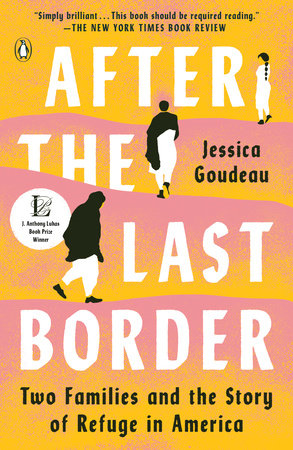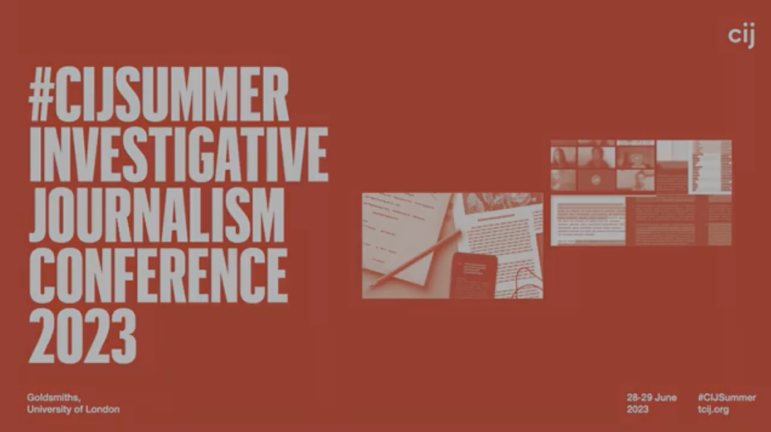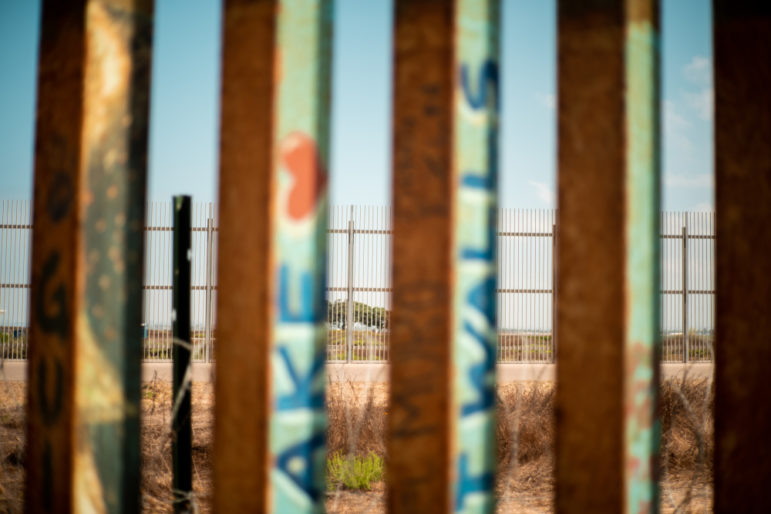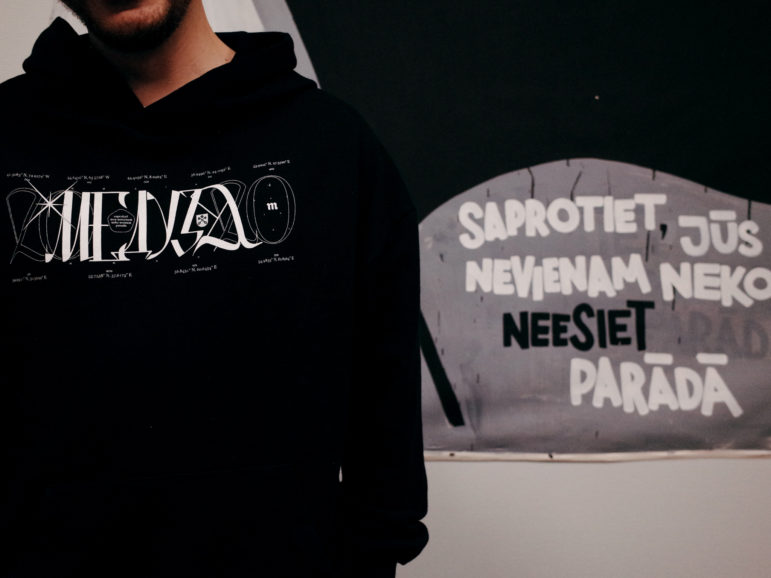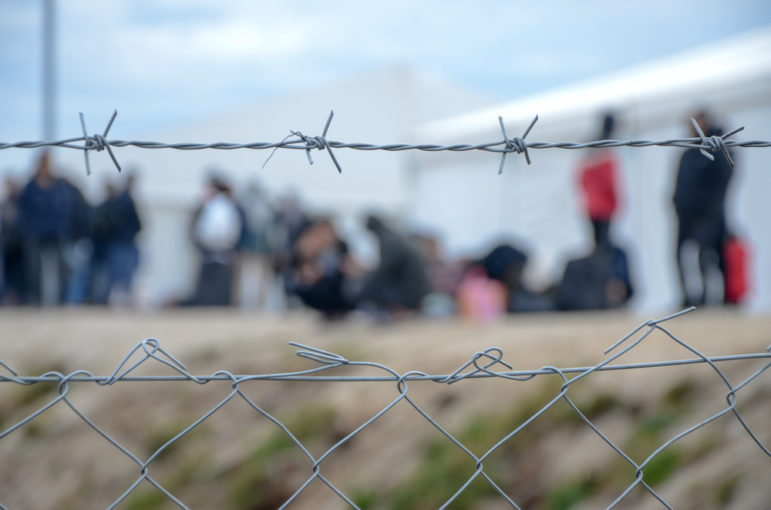

Image: Shutterstock
‘Leading with Empathy’ when Writing about Displaced People
Read this article in
We are living in a century of displacement, says Jessica Goudeau, award-winning author of “After the Last Border: Two Families and the Story of Refuge in America.” And because we are, journalists need to learn to tell the stories of displaced people by reconsidering some entrenched journalistic convention and leading with empathy.
Consider her book’s primary characters: Mu Naw, a Christian woman from Myanmar, and Hasna, a Muslim woman from Syria. Both names are pseudonyms, as is Amina, the Syrian-American translator who worked with Goudeau to tell Hasna’s story. Goudeau and her editors agreed to protect the women’s identities — even when it meant leaving out compelling bits of their stories — because to do otherwise would put families they left behind in danger.
“Empathy may be my highest journalism value,” Goudeau told me.
Her work proves its value. “After the Last Border” won the 2021 J. Anthony Lukas Book Prize for best American nonfiction writing from the Columbia Journalism School and the Nieman Foundation for Journalism at Harvard University. It also won a Christopher Award, which honors work that celebrates “the power of facing hardships with hope, courage, determination, and faith,” and was named a New York Times Editor’s Choice book. A New York Times review by Mimi Swartz calls it “simply brilliant, both in its granular storytelling and its enormous compassion.”
The review notes that immigration is part of America’s mythology. “Such stories are the staples of newspaper and TV news features,” Swartz writes, “so much so that telling them in fresh ways seems almost impossible.”
Goudeau says that telling these stories in fresh ways is the only way to get at the truth, and that requires a bigger box of journalistic tools, starting with empathy. Goudeau’s process with all her sources is collaborative. Her reporting and writing about Hasna and Amina was especially intimate, with the women meeting at each other’s houses for lunch every two weeks for almost two years.
Goudeau has written about displaced people for publications such as Teen Vogue, Catapult, The Los Angeles Times and The Washington Post. She also produces documentaries.
She says her empathetic approach to journalism was informed, in part, by her own experience as a foreigner in other countries. She lived in Thailand for two summers in college, in Brazil and Chile later, and traveled extensively around South America, spending time in Argentina, Mexico and Peru, among other places.
“I had the experience of being treated like a child,” because of her lack of language skills, she said, “and the frustration of recognizing that my brain was moving faster than my mouth could.”
I talked with Goudeau about her journalistic process and what’s at stake when journalists interview vulnerable people. At one point I referred to the subject of her stories as “refugees” and she said that a better term would be one that doesn’t equate a single status with an entire person or group. Careful language is one way to honor the complex humanity of people seeking refuge.
Our conversation has been edited for length and clarity.
Madeline Bodin: How do you find the people you write about?
Jessica Goudeau: I’ve taken a non-traditional path to journalism. When I was getting a Ph.D. at the University of Texas, I began advocacy work with former refugees and that eventually led to writing. For me, so much of the work of finding people who are interested in my telling their stories has been through friendships. I’ll call a close friend, who will connect me with other people.
Mu Naw and I had been friends for over a decade before we began the process of writing together. To find Hasna, I interviewed several people. I knew I wanted to tell the story of someone who came from Syria, but I wasn’t sure how to find someone. The minute I met her, I knew she was the person. She not only had a story that is interesting, but she is the kind of person that I could connect with on the deep level needed to do this work.
MB: How do you build that trust?
JG: If you are friends with people for 10 to 15 years and then wait for a president to ban those groups of people, that’s a great way. I’m not sure that there’s a fast way to do this.
Studying literature gave me a deep knowledge of representation and the ways that white people have done damage telling the stories of others. That was excellent training in respecting the stories of the people that I tell now.
I’ve tried to take on the more professional aspects of journalism, but it’s still my instinct to lead with empathy and friendliness. That comes from my advocacy work. I give people complete narrative control as much as possible. If there’s something that they don’t want to say, they can trust me with that.
MB: How do you negotiate the details of how you are going to identify someone, such as using a pseudonym, when someone’s story can put their life, or others’ lives, in danger?
JG: Discussing pseudonyms is actually one of the more awkward conversations I have in short interviews. With Hasna and Mu Naw, because these were such long-term interviews, we had built trust by the time we made decisions about their names and identifying details.
For Hasna’s story, in the first draft we told it straight with all the details, the correct names, everything — just getting the story down. Then my editor and I went through and made some decisions about which stories would definitely reveal Hasna’s identity. There were amazing stories, but anyone who had connections in Syria would know the family. We had to take those out.
My biggest fear is that my writing is going to put someone who’s in danger in further danger, but I also want to honor the people whose stories I’m telling. I work with them to make sure that they understand what’s at risk, so they can make good decisions.
MB: What about negotiating with editors about protecting your sources’ identities? In my experience, editors don’t like anonymous sources.
JG: We pitched the book under the pseudonym. My editor at Viking immediately understood the stakes. She even flagged some things I missed.
With magazines and newspapers, early on in my writing, I pitched some articles that got accepted and then editors didn’t want to change the names. And I pulled them. Lately that hasn’t happened as much. Having a book published, and as I build this writing career, the editors I work with understand the connections I’m making. The best editors are the ones who say, “Absolutely, what do we need to do?” I appreciate that attitude because this is not fictionalizing. It’s about protecting people whose stories would otherwise not be told because of the danger.
MB: What do you wish journalists knew about writing about refugees or displaced people?
JG: There are so many tropes that journalists have for displaced people. We want them to be grateful. We want them to be needy. We want them to have an amazing journey that takes them to the edge of death. That’s what increases sympathy for a US or European audience, but those limited tropes rarely encompass the full story of these complex people.
I think centering people as they experience their lives makes for better stories and gives them some control over what story they want people in positions of power to hear. This is a move from fiction: the specific is more universal than generalities. People who were displaced or have gone through tragic circumstances are more than just that situation. If their personhood comes through, it honors their story and makes for better writing.
There need to be discussions about how to help journalists handle the mental health aspects of interviewing traumatized people. There needs to be scaffolding to allow journalists the empathy to ask good questions and not to do damage in the interview. I really struggled with this during “After the Last Border.” Luckily, I had an amazing editor and agent who helped me make good decisions. If I lose my ability to empathize, I lose something important in the writing process.
MB: Do you have any advice for journalists about how to interview traumatized people?
JG: Although I have a list of questions in my head or in my notebook, sometimes you just have to let people tell their story. There is an adage in memoir: “Write from your scars, not from your wounds.” When the wounds are fresh, I try not to push, and sometimes that means I don’t get the best interviews.
Usually I ask: what would you like to tell me? Or: If you have the chance to talk to people in the United States, what would you want them to know about you and your situation? That’s often a great entry point because I can hear the “why” behind their interview. I find that allowing them to begin and lead the story, I can ask follow-up questions and we can eventually develop this whole narrative together.
If they say they don’t want to talk about something, I don’t push. I may be missing what would be amazing and sensational details for a story, but I’m doing it in a way that I hope is leaving them not feeling abused or bruised by my questions.
MB: When you have one of those interviews that is scant on details, do you try to make up for it in the writing?
JG: The interview technique for people in positions of power — where I’m happy to push back — feels like a very different process from when I’m interviewing people whose stories don’t often get told, which is more invitational. What story do you want to tell? What details would you like to include? It’s a much gentler tone and a more open way of questioning.
It doesn’t always work out. I have so many interviews that don’t make it to publication. But I have almost never encountered people who have been displaced, who are seeking asylum, or who are undocumented, who don’t want their story told as long as they can do it in a way that doesn’t jeopardize their place here. They genuinely want people to know.
For me, those are always easy interviews. I almost always get about 10 times more material than I’m able to use in any story. This is why I love books. They have a longer word count.
MB: How do you take care of your own mental health so you can continue to be empathetic to others?
JG: I want to start with a caveat that my mental health is not as important as the stories of people I’m telling.
Doing these interviews has been surprisingly freeing for me. That was not something that I expected. I feel contentment and joy knowing that I’m able to do something about what’s happening in the world. I can write. I can interview. There’s a purposefulness to this work that carries me a long way.
Therapy is amazing. I have had a good therapist for a long time. I have a partner who values and supports my work. I have amazing friends who talk me down and help me recognize that I have to give space to this, that I can’t just muscle through it.
Carolyn Forché is a poet and journalist who wrote a book called “Angel of History.” I have found there is a way that poets are able to be open to the world and yet not broken by the world, that reflects the approach I’m trying to have.
I read a lot of silly books. I watch a lot of silly movies. Sometimes I just have to sit and let it be, and I have to grieve, too. I feel like I’m still always figuring this out. It’s lifelong work.
MB: Is there anything else you think journalists should know about working with displaced people?
JG: This is going to be the century of displacement. This work is incredibly important around the world, but displaced people’s voices are rarely centered. It’s a real disservice because they’re the experts. Journalists and editors who are centering those voices and making sure that the true stories are being told are the ones who are moving ahead in a much better way for this kind of writing.
This interview was originally published by Nieman Storyboard and is reprinted here with permission.
Additional Reading
Migration Reporting: Sources, Guidelines, Contests
As Governments Attack the Media, Reporters Must Consider Their Responsibility to Protect Sources
The Eroding State of Source Protection
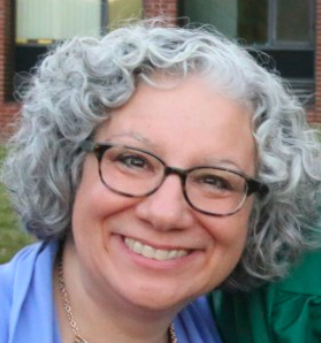 Madeline Bodin is a veteran science, wildlife, and environmental journalist whose work has appeared in the Boston Globe, Christian Science Monitor, Scientific American, and Popular Mechanics. She is a member of the National Association of Science Writers and the Society of Environmental Journalists.
Madeline Bodin is a veteran science, wildlife, and environmental journalist whose work has appeared in the Boston Globe, Christian Science Monitor, Scientific American, and Popular Mechanics. She is a member of the National Association of Science Writers and the Society of Environmental Journalists.






